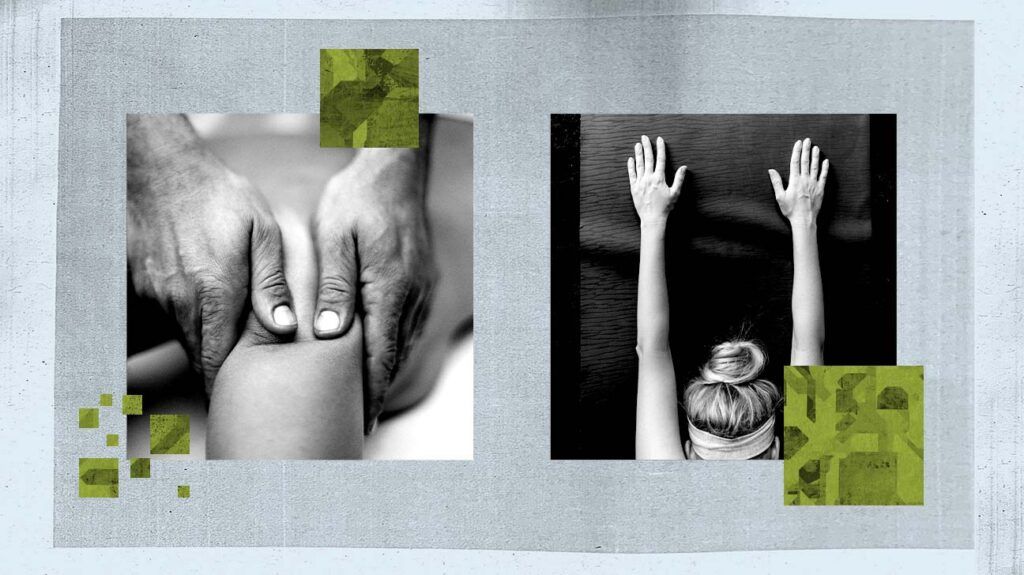Depending on the cause, physical therapy, massage, stretching, yoga, relaxation, heat, or other therapies may help release chronically tight muscles.
Various factors can cause chronically tight or stiff muscles, such as posture, muscular imbalances, injuries, and stress. In some cases, muscle tightness could be the result of another condition.
Sometimes, home care is enough to relieve tight muscles, but in other cases, people may need support from a medical professional.
This article discusses the causes and possible treatment options for chronic muscle tightness.

Treating chronic muscle tightness starts with understanding the cause. Potential causes for chronically tight muscles include:
- overuse
- injuries
- prolonged sitting or inactivity
- problems with posture
- chronic stress
Sometimes, stiff muscles can be a symptom of other conditions, such as:
- fibromyalgia
- lupus
- brain or spinal cord injury
- cerebral palsy
- multiple sclerosis
- stiff person syndrome
Depending on the cause, the following therapies may help relieve tight muscles.
Massage can help ease muscle pain and tension and induce relaxation. For some, this alone can help release tight muscles.
According to a 2021 study, even one quick massage can reduce muscle tightness. The study assessed the effects of a single 20-minute massage on the neck and shoulders of 40 people and found that it decreased the perception of muscle tension.
People can get massage therapy from a professional massage therapist, or it may be possible to perform self-massage at home. The techniques for this may vary depending on the area of the body a person wants to massage. As a general guide, people can try some basic massage strokes, such as:
- effleurage, which involves light, sweeping strokes across the skin
- petrissage, or kneading with the fingers or knuckles
- tapotement, or percussion, which could involve tapping or patting
People can also use massage devices, such as facial rollers or foam rollers.
It may help people to try different strokes to find what feels good. If massage hurts, they can reduce the pressure or stop completely until speaking with a doctor.
Gentle heat is a safe way to soothe tight, tense, or sore muscles. A 2022 analysis of previous research found that local heat application was effective for acute or short-term musculoskeletal conditions, reducing pain, improving function, and improving quality of life compared to no treatment or a placebo.
However, whether heat works for a specific or chronic condition is less certain. The study also could not determine the level of bias in previous research, so more studies are necessary.
People can use gentle heat by:
- applying a warm compress
- having a warm bath or shower
- using a heated massager
Stretching can be an effective way to relieve tight muscles at home. A
The review focused on static stretching, which is when someone holds a stretch in a still position for an extended period. This could involve standing, sitting, or lying down while holding the stretch.
Yoga is another approach that often involves muscle stretching. Depending on the style, yoga may focus on:
- stretching shorter muscles for longer periods, as with Yin yoga
- strengthening weaker muscles through dynamic movement, as in Ashtanga or Vinyasa yoga
- a combination of both
According to the
Other
- increase muscle flexibility
- reduce anxiety
- help with fibromyalgia symptom management
As with any type of exercise, yoga can result in injury. A person can consider talking with a doctor to check whether yoga is appropriate and learn with a qualified instructor to reduce the risk.
Physical therapy may be useful for stretching or mobilizing muscles that are tight and stiff. For some, it may help address underlying causes, such as muscle overuse, muscle weakness, or an unhelpful posture.
Physical therapy can have many goals,
- relieving pain
- helping with injury rehabilitation
- improving how the body works and moves
- preventing chronic conditions
Doctors may also use physical therapy to manage chronic conditions such as multiple sclerosis, which can cause muscle stiffness.
To receive physical therapy, a person must consult a physical therapist. They might also need a doctor’s referral to receive treatment or get health insurance coverage.
Sessions usually involve learning exercises and performing them. A physical therapist may move body parts to stretch them or apply other therapies, such as heat, cold, or massage. A person will also receive exercises to perform at home.
Some people use magnesium supplements or Epsom salt baths to relieve muscle tension.
Magnesium is a mineral that plays a role in muscle contraction and relaxation. As a result, a magnesium deficiency may affect how the muscles and body operate.
It is unclear whether Epsom salt baths can help reduce muscle tension. Epsom salts contain magnesium, so the theory is that the body could absorb some magnesium from an Epsom salt bath through the skin. However, according to a
Other therapies that may help with various types of chronic pain or discomfort
- osteopathic manipulation
- acupuncture
- chiropractic treatment
- tai chi
If home care does not work to relieve muscle tightness, or a person has other symptoms, they should speak with a doctor.
A doctor will be able to diagnose a person’s muscle tightness, determine the underlying cause, and prescribe a treatment plan. They may also be able to refer to other specialists that can help, such as physical therapists.
Chronic muscle tightness may be due to factors such as prolonged sitting, injury, or chronic stress. In some cases, it can be a symptom of other serious conditions, such as lupus, fibromyalgia, or cerebral palsy.
Treatments vary based on the cause. Physical therapy addresses multiple factors that can cause tight muscles. Heat, stretching, gentle yoga, and massage may also benefit someone with chronic stiffness.
While some people believe magnesium and Epsom salt baths may help reduce muscle tension, more research is necessary to determine whether this is effective. Other therapies for chronic muscle discomfort or pain include tai chi, acupuncture, and chiropractic treatment.
